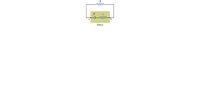
College Physics
11th Edition
ISBN: 9781305952300
Author: Raymond A. Serway, Chris Vuille
Publisher: Cengage Learning
expand_more
expand_more
format_list_bulleted
Question
thumb_up100%
For the circuit in the figure below, find the following. (Take
E = 5.9 V,
R = 5.4 ohm,
and
r = 1.1 ohm.)
(a) the magnitude of the current and the direction of positive current
(b) the potential difference across the battery terminals a and b
(c) the rate at which heat is being produced in the 5.4 ohm resistor
(d) the rate at which heat is being produced inside the battery
(e) the rate at which the battery's chemical energy is being used
| magnitude | |
| direction |
(b) the potential difference across the battery terminals a and b
(c) the rate at which heat is being produced in the 5.4 ohm resistor
(d) the rate at which heat is being produced inside the battery
(e) the rate at which the battery's chemical energy is being used

Transcribed Image Text:R
a
Battery
Expert Solution
This question has been solved!
Explore an expertly crafted, step-by-step solution for a thorough understanding of key concepts.
Step by stepSolved in 2 steps with 1 images

Knowledge Booster
Learn more about
Need a deep-dive on the concept behind this application? Look no further. Learn more about this topic, physics and related others by exploring similar questions and additional content below.Similar questions
- Calculate the current in the resistor R4, given that R = 42 ohm and battery EMF = 9. (Ignore internal resistance of the batter). Write your answer in amperes.arrow_forwardConsider the circuit shown in the figure below. (Assume R = 4.80 Ω and ΔV = 12.0 V.) (a) Find the equivalent resistance of the circuit in the figure. I FOUND IT TO BE 12.11 OHMS(b) Find each current in the circuit.(c) Find the potential difference across each resistor.(d) Find the power dissipated by each resistor.arrow_forwardThe figure below shows five resistors and two batteries connected in a circuit. What are the currents I,, I2, and I3? (Consider the following values: R, = 1.08 0, R2 = 2.20 0, R3 = 3.18 0, R4 = 4.04 0, R5 = 6.06 0. Due to the nature of this problem, do not use rounded intermediate values in your calculations-including answers submitted in WebAssign. Indicate the direction with the sign of your answer.) A A I3 = A Rs R3 12.0 V R2 9.00 V R1arrow_forward
- Problem 2: The battery has a potential difference of 10 V and each resistor has a resistance of 2 ohms. RI R2 'R3 (a) Determine the equivalent resistance of the 3 resistors. (i.e. if you replace the three resistors shown with a single equivalent resistor, what value should you select?) 3 ohms (b) Determine the current through each resistor. (R1 has 1.66 A, R2 has 1.66 A, R3 has 3.33A)arrow_forwardshow full and complete procedure please HANDWRITTEN onlyarrow_forwardThe figure below shows five resistors and two batteries connected in a circuit. What are the currents I1, I2, and I3? (Consider the following values: R1 = 1.20 Ω, R2 = 2.16 Ω, R3 = 3.19 Ω, R4 = 4.18 Ω, R5 = 6.18 Ω. Due to the nature of this problem, do not use rounded intermediate values in your calculations—including answers submitted in WebAssign. Indicate the direction with the sign of your answer.)I1=?I2=?I3=?arrow_forward
- Consider the circuit, as shown in the figure above. R1 = 10.0 ohm, R2 = 11.0 ohm, R3 = 4.00 ohm, R4 = 5.00 ohm, R5 = 21.0 ohm and V = 26.0 V. Calculate the magnitude of the current in the R5 = 21.0 ohm resistor. Calculate the magnitude of the potential difference between points a and b.arrow_forwardIn the circuit of (Figure 1), each resistor represents a light bulb. Let R1=R2=R3=R4=R1=R2=R3=R4= 4.48 ΩΩ and let the EMF be 9.00 V. Find the current in the bulb R2. Express your answer in amperesarrow_forwardAn ECG monitor must have a time constant less than 100 microsecond to be able to measure variations in voltage over small time intervals. If the resistance of the circuit (due mostly to that of the patient’s chest) is 1000 Ohms, what is the maximum capacitance of the circuit? Please submit your answer in units of nanoFarad (nF).arrow_forward
arrow_back_ios
arrow_forward_ios
Recommended textbooks for you
 College PhysicsPhysicsISBN:9781305952300Author:Raymond A. Serway, Chris VuillePublisher:Cengage Learning
College PhysicsPhysicsISBN:9781305952300Author:Raymond A. Serway, Chris VuillePublisher:Cengage Learning University Physics (14th Edition)PhysicsISBN:9780133969290Author:Hugh D. Young, Roger A. FreedmanPublisher:PEARSON
University Physics (14th Edition)PhysicsISBN:9780133969290Author:Hugh D. Young, Roger A. FreedmanPublisher:PEARSON Introduction To Quantum MechanicsPhysicsISBN:9781107189638Author:Griffiths, David J., Schroeter, Darrell F.Publisher:Cambridge University Press
Introduction To Quantum MechanicsPhysicsISBN:9781107189638Author:Griffiths, David J., Schroeter, Darrell F.Publisher:Cambridge University Press Physics for Scientists and EngineersPhysicsISBN:9781337553278Author:Raymond A. Serway, John W. JewettPublisher:Cengage Learning
Physics for Scientists and EngineersPhysicsISBN:9781337553278Author:Raymond A. Serway, John W. JewettPublisher:Cengage Learning Lecture- Tutorials for Introductory AstronomyPhysicsISBN:9780321820464Author:Edward E. Prather, Tim P. Slater, Jeff P. Adams, Gina BrissendenPublisher:Addison-Wesley
Lecture- Tutorials for Introductory AstronomyPhysicsISBN:9780321820464Author:Edward E. Prather, Tim P. Slater, Jeff P. Adams, Gina BrissendenPublisher:Addison-Wesley College Physics: A Strategic Approach (4th Editio...PhysicsISBN:9780134609034Author:Randall D. Knight (Professor Emeritus), Brian Jones, Stuart FieldPublisher:PEARSON
College Physics: A Strategic Approach (4th Editio...PhysicsISBN:9780134609034Author:Randall D. Knight (Professor Emeritus), Brian Jones, Stuart FieldPublisher:PEARSON

College Physics
Physics
ISBN:9781305952300
Author:Raymond A. Serway, Chris Vuille
Publisher:Cengage Learning

University Physics (14th Edition)
Physics
ISBN:9780133969290
Author:Hugh D. Young, Roger A. Freedman
Publisher:PEARSON

Introduction To Quantum Mechanics
Physics
ISBN:9781107189638
Author:Griffiths, David J., Schroeter, Darrell F.
Publisher:Cambridge University Press

Physics for Scientists and Engineers
Physics
ISBN:9781337553278
Author:Raymond A. Serway, John W. Jewett
Publisher:Cengage Learning

Lecture- Tutorials for Introductory Astronomy
Physics
ISBN:9780321820464
Author:Edward E. Prather, Tim P. Slater, Jeff P. Adams, Gina Brissenden
Publisher:Addison-Wesley

College Physics: A Strategic Approach (4th Editio...
Physics
ISBN:9780134609034
Author:Randall D. Knight (Professor Emeritus), Brian Jones, Stuart Field
Publisher:PEARSON